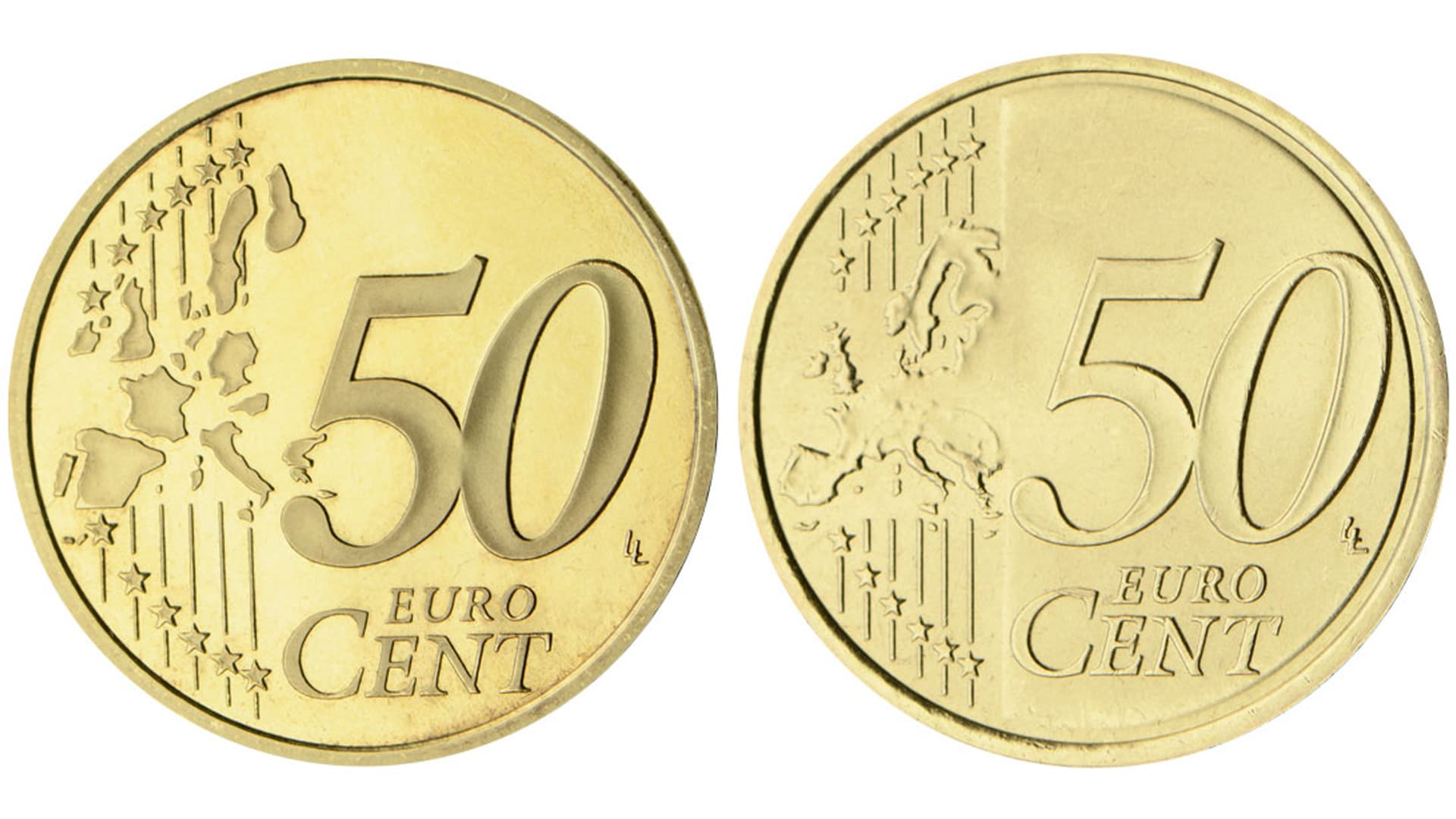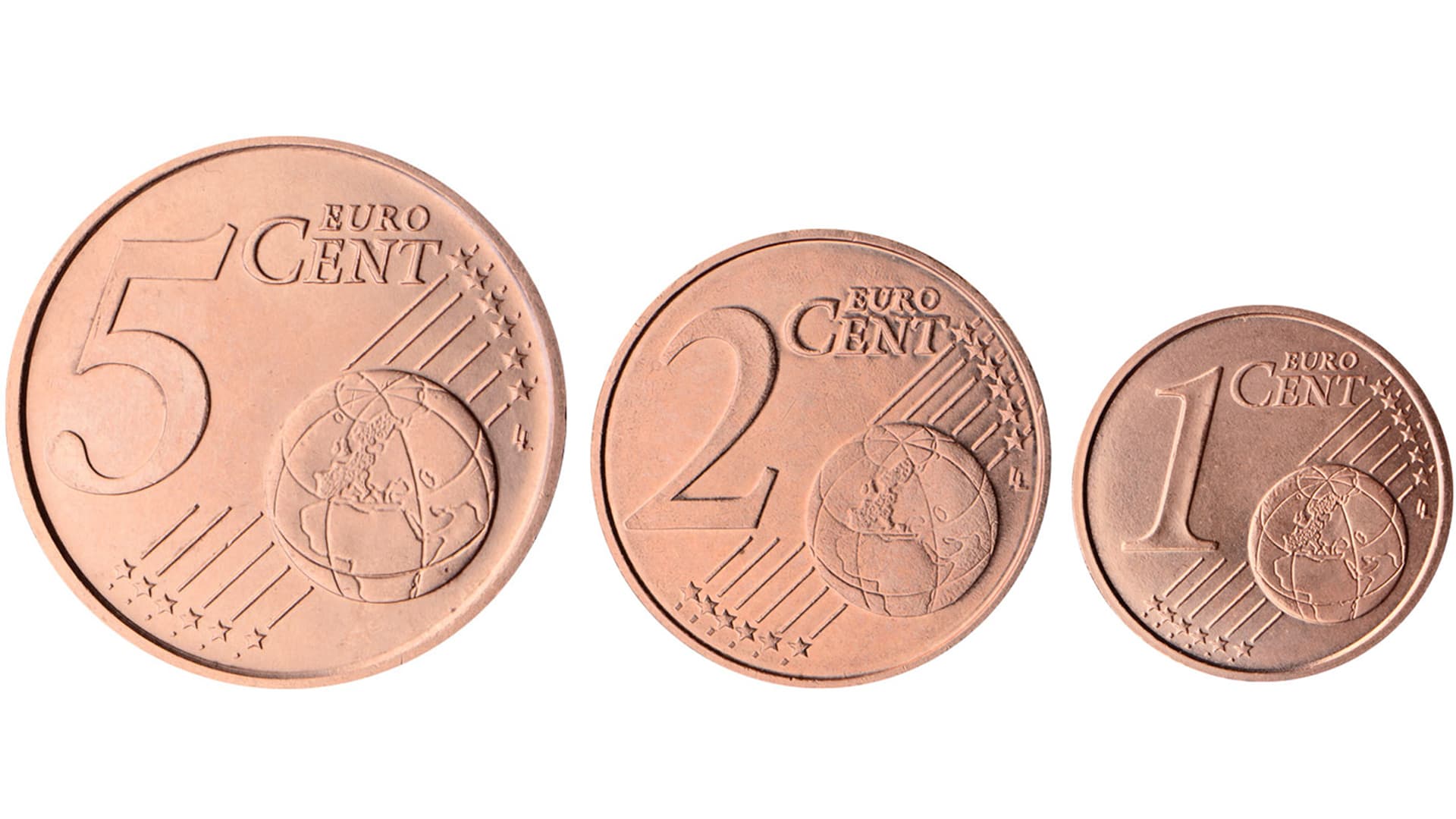The euro coins are issued in eight different denominations: €2 and €1, and 50, 20, 10, 5, 2 and 1 cent. The euro coins have a common European side and a national side specific for the euro area Member State.
The common sides of the coins were designed by Luc Luycx of the Royal Belgian Mint, whose initials are present on each euro coin. The common side of the first design euro coins of the denominations of €1 and €2, and 50, 20 and 10 cent shows the coin denomination, the name of the currency, a geographical image of Europe, showing the Member States before the enlargement on 1 May 2004 and the 12 stars of the EU flag.

The euro coins of the second design, in circulation since 2007, in the denominations of €2 and €1, and 50, 20 and 10 cent, on the common side, instead of the map of Europe comprising the presentation of the Member States prior to the enlargement on 1 May 2004, depict the map of Europe as a geographical whole.
The common side of the euro coins in the denominations of 5, 2 and 1 cent show the coin denomination, the name of the currency, the presentation of Europe in relation to Africa and Asia on a globe and the 12 stars symbolising the EU flag.

The design of the national side of euro coins in circulation must bear the twelve stars symbolising the EU flag, the year of issuance and the code of the name of the issuing Member State. Changes to the designs may only be made once every 15 years. An earlier change in the design of the national side of the regular euro circulation coins is exceptionally allowed in the cases of the national side of a euro coin showing the head of state, when the head of state changes.
Each EU Member State using the euro currency as its legal tender issues euro coins with its national side with the approval of the European Commission. Each Member State decides independently whether the same or different motifs will be shown on the national side of all euro coin denominations. Some Member States have decided to implement identical motifs on all euro coin denominations, while others have opted for different motifs for each denomination. Most states opted for three groups of motifs classified according to denominations, so that €1 and €2 coins form one group, 50, 20 and 10 cent coins the second group and 5, 2 and 1 cent coins form the third group.
